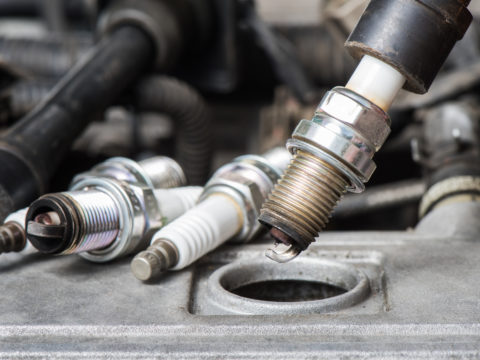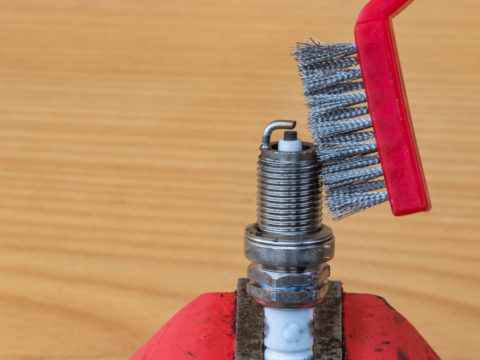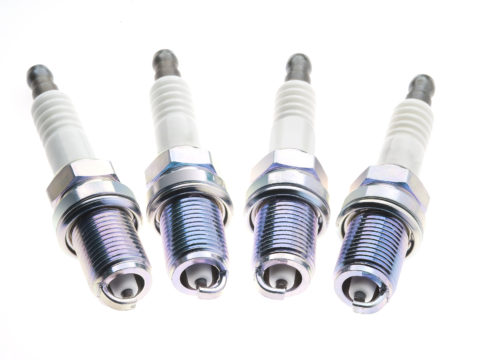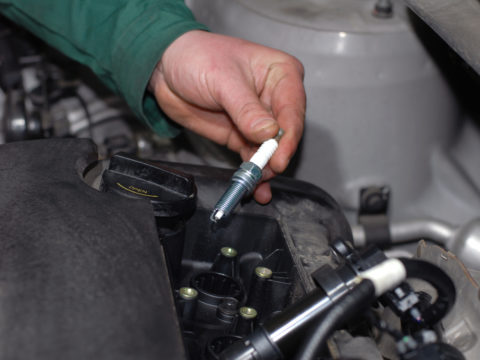Contents
How does Oil get on Spark Plugs?
Having Oil on your Spark Plugs is NOT GOOD. If there is an oil trail, then it will be easy to spot what’s wrong. Finding and fixing the leak will take some dirty work.
A likely explanation as to why there is the oil is because of an unbalanced mixture of oil. This is because the ratio of oil to gasoline is wrong. Usually, the ratio should be 50 parts gasoline 1 part oil.
CHECK YOUR PISTON RINGS! If your piston wrongs are faulty, oil can seep through onto your Spark Plugs. You should be able to see if there is any oil on the sparkplugs visibly. You should be able to spot any leaks when you check the piston rings easily. You must check the oil layer just below the second ring. Doing this should help you identify a leak from piston rings.
5 Oil Filled spark plugs symptoms:
It would be best to stop the leak ASAP. Oil on spark plugs can quickly start an engine fire. There are warning signs of Oil filling Spark Plugs.
They are:
- Burning Oil Smell
- You can track the smell of oil to the source and then clean the Spark Plugs.
- The valve cover may be dirty or leaking oil.
- If the valve cover is dirty, you may simply clean it
- If a valve cover is leaking, you need to replace it as keeping it can be dangerous
- The engine is low on oil
- You might find that you need to fill up will oil frequently
- The engine may be running roughly or causing misfires
- The misfires or backfires are loud sounds often mistaken for gunshots. Backfires and misfires can happen when an engine has too much or too little oil.
- Overheating the engine
- An overheated engine may start to create white smoke through your bonnet.
- The smoke is an indication that the engine is burning so hot it’s evaporating Your water.
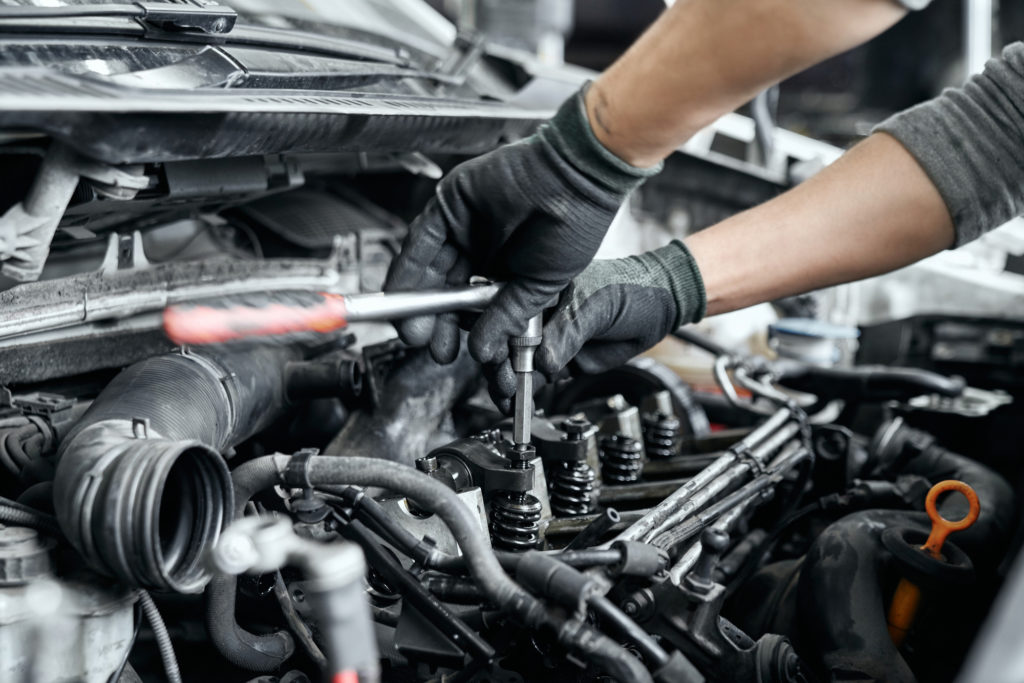
How to check for oil on Spark Plugs well (Step-by-step guide)
Step 1: Know your Spark Plugs- they come in different shapes and sizes
Step 2: You should check to see if there are any cracks or chips in the plugs. Not doing this can cause fires.
Step 3: Clean your spark Plugs; You can do this with a rag or towel. Ensure there is no oil or gasoline on the plugs. Even a small amount of oil can be dangerous.
Step 4 (Bonus step): Testing the spark plugs
Multi-meters have an ohmmeter; this is how you can measure the strength and resistance of your spark plug.
You would use leads to touch the spark plug’s tip and the small head under the clip at the bottom.
This will see if the spark plugs are closed circuits or if they have breakdown resistance. Any resistance=bad Spark Plugs
5 causes of oil on spark plugs
- Incorrect Gasoline to oil ratio
- The correct measurement for oil in 2-stroke engines or small engines is 50 parts gasoline and 1 part oil.
- An incorrect mixture will make the oil too slippery or wet. An incorrect will cause oil leaks to be more common.
- Leaking Valve Cover Gasket
- If you ever have a Spark Plug such as the one in the photo. Count yourself lucky.
- This is what happens when too an extreme amount of oil gets in.
- The valve cover gasket doesn’t cover the gasket well enough. It then leaks down the Spark Plugs VERY BAD.
- This will cause misfires and potentially even small engine fires.
- Clogged Crankcase Ventilation
- If your spark plugs look anything like this. YOU WILL HAVE A PROBLEM
- A common problem with spark plugs is that the crankcase ventilation has become clogged with oil. AGAIN VERY, VERY BAD
- This will cause overpressure within the sparkplug, which pushes out oil.
- This will then burn and clogs your spark plugs.
- If you are able, you can check the crankcase ventilation. Ensure it’s clean and breathing, then you are all safe.
- Faulty TurboCharge
- Turbocharges is another part of the engine. They can leak onto a sparkplug.
- This leak will slip from the combustion chamber within the Turbocharge and onto the spark plugs.
- If you can clog, can check your intercooler intake pipes
- If they are full of oil the Turbocharge is faulty
- Worn out intake Valves
- Valves play vital roles in combustion chambers. They do this by regulating the inflow and outflow of air and fuel.
- They also control exhaust gases’ outflow.
- Fuel, oil, and coolants must never mix in the engine.
- The Valve seals may wear out, thus can then allow oil into the crankcase. This will then leak onto the Spark plugs.
What to do if you notice on your Spark Plugs (Step-by-Step Guide)
If you are worried about this process, you can seek an expert opinion by visiting your local mechanic. This can be a daunting task that will require mechanic tools such as gloves and small wrenches and any new parts that are broken or damaged.
Step 1- Quick Action
- When you notice any damage, you must quickly act.
- Turn off your engine and disconnect from the terminal
Step 2- Remove Valve Covers
- To see the spark plug, you will need to take out the vehicle’s Valve Cover.
- You can do this by gently removing the bolts (This may require tools if it is too tight)
- Ensure you don’t cause damage to the head of the cylinder when removing the bolts.
Step 3- Get Out the Spark Plugs
- Now to remove the spark plugs
- To avoid any potential bodily harm, use leather gloves and adequate tools
- You should inspect them for any traces of oil.
- It would be a good idea to inspect the wear and tear of the plugs. You will need to look for cracks or chips in the plugs. Also, be on the lookout for bending on the cylinder head.
Step 4 – Removing the O-Ring Seal
- Start to peel off the existing gasket.
- CLEAN the cylinder head and valve cover.
- You can use any degreaser for this.
ENSURE NO SUBSTANCES REACH THE INTERNAL AREA OF THE ENGINE
Step 5 – Reinstalling a New O-Ring Seal
- Replacement is simple.
- You will need to buy a replacement O-ring seal at your local hardware store.
- You will be able just to remove the old O-ring and put in the new one.
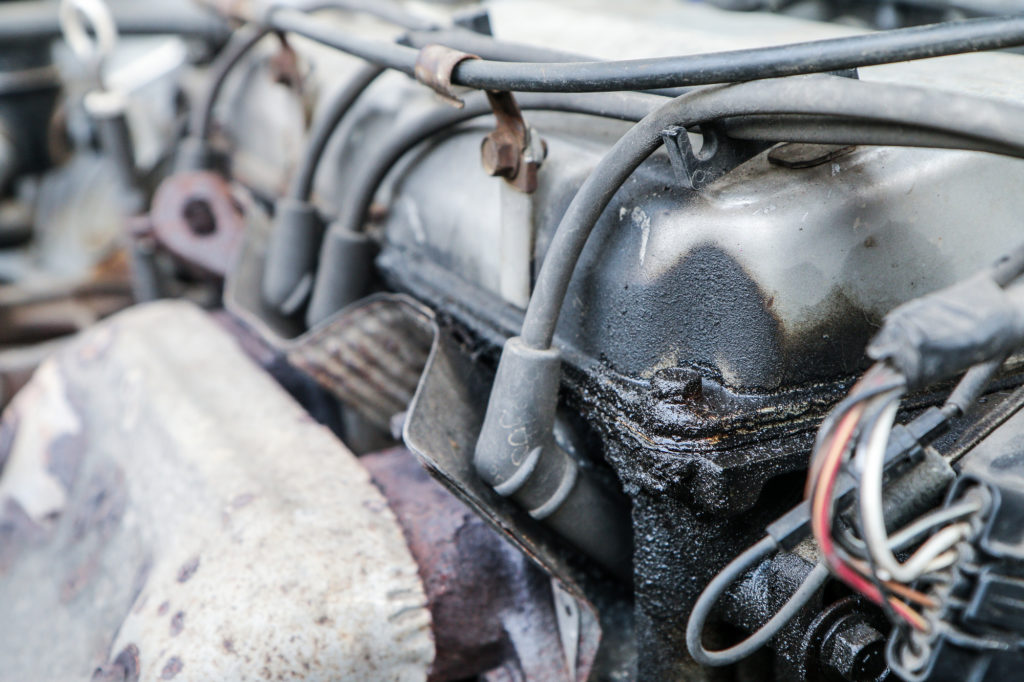
How do you stop oil fouling on spark plugs completely?
The simplest way to stop oil fouling is to check your Spark Plugs regularly. Oil fouling(build-up of oil around the cylinder head that burns) is something you can avoid. Regular maintenance can help you prevent any oil buildup.
You should try and ensure that your Spark plugs are in working order and safe. Oil fouling is not dangerous. However, oil on the spark plugs itself is. Oil fouling will keep spark plugs from performing well.
What if you don’t fix the problem?
Not everyone knows about how to use mechanic tools or the minor details of engines. THAT IS OK. There are reasons for mechanics and car shops. Should you need any assistance or want help, you can visit your nearest car mechanic.
They should be able to help you and fix any other issues you might be aware of.
FAQ
Can oil on spark plugs cause misfires?
Yes. It is likely for oil on spark plugs to cause both misfires and backfires. There are other possibilities, such as car smoke with a significant oil leak and small fires.
Can you drive with oil on Spark Plugs?
In theory, it is possible to drive with oil on Spark Plugs. It is a terrible idea because misfires and backfires can cause panic and be distracting.
It is not a good idea to drive with oil on your spark plugs. Should you be stranded, there are services such as AAA that will come out and help you.
Will oil on Spark PLugs cause a car not to start?
It is possible to start a car with oil on your spark plugs. This will depend on how much oil is on the spark plugs. In small amounts, it is possible.
Starting the car when you have oil can you plugs can also start fires. It is a better idea to fix the problem or call someone to drive you.

